TOPICEXHIBITION2023.04.19
Interview with Oscar Oiwa
If I don't open new doors, new ideas won't come to me.
With the drastic easing of border control measures in Japan, the world is finally back to a place where people can “travel” freely.
The New York-based artist Oscar Oiwa is one of the first artists to sense the atmosphere of the times and continues to work energetically, such as with his Quarantine Drawing Series of prints depicting the lives during the COVID-19 pandemic in 2021. We interviewed the artist online to learn more about the upcoming solo show from April 21, and his past activities as an artist.
My Ring reconstructs the artist’s activities over the past 28 years.
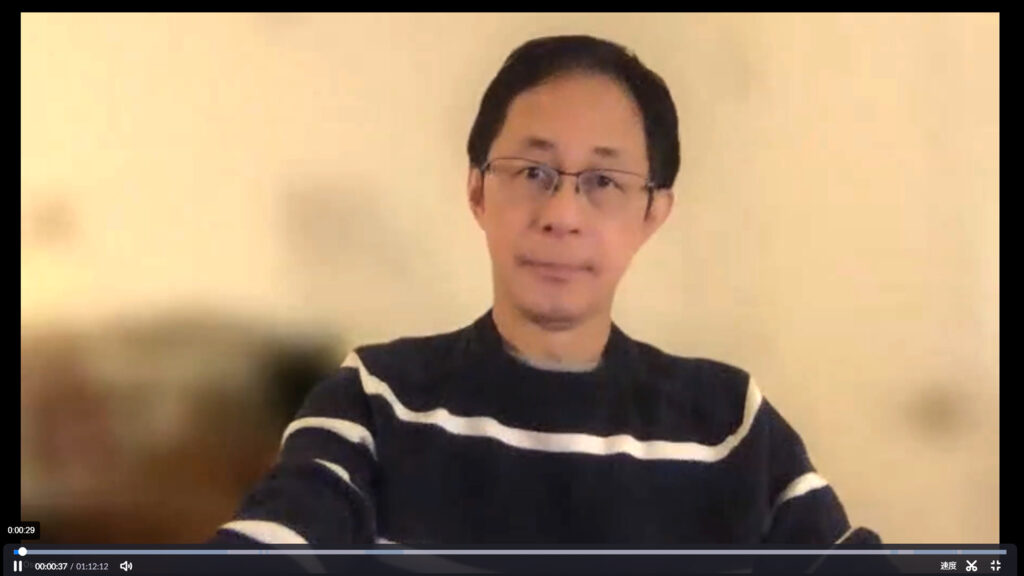
–Please tell us about your solo exhibition at Art Front Gallery.
Oscar Oiwa:The new My Ring series, the centerpiece of the upcoming exhibition, is a series of paintings that reassembles motifs from the works I have painted over the past 28 years since I began oil painting in the UK around 1995. Each of the paintings depicts a large stream like a river or a road, and when installed side by side, the streams appear to be connected. This work was inspired by my desire to create a painting in which the paths I have taken up to now seem to form a circle. I have been drawing inspiration from my daily life, and this work contains various works from the past.
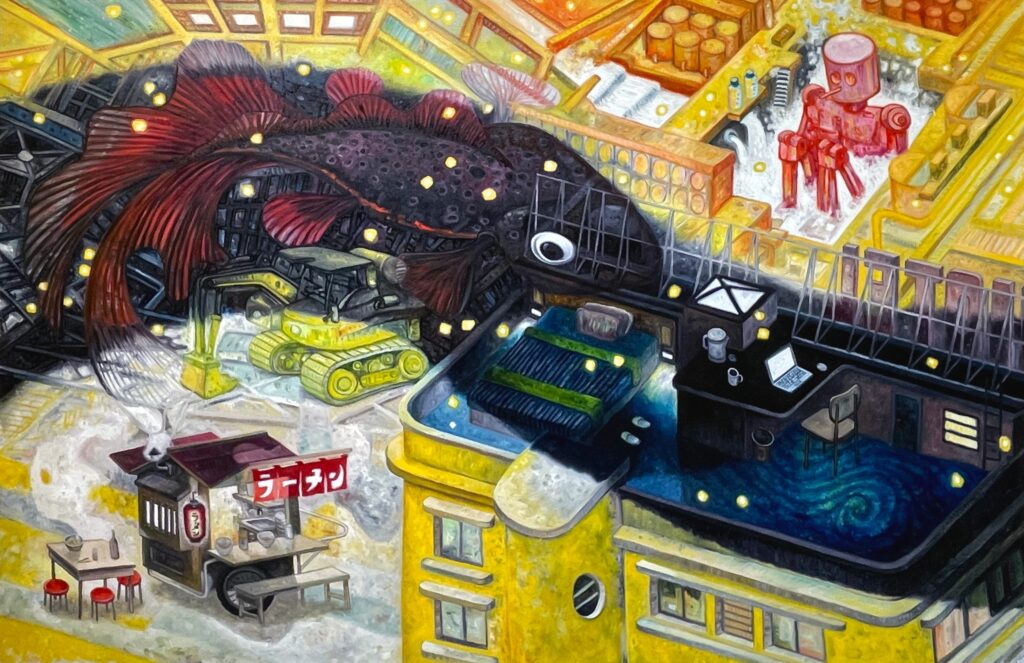
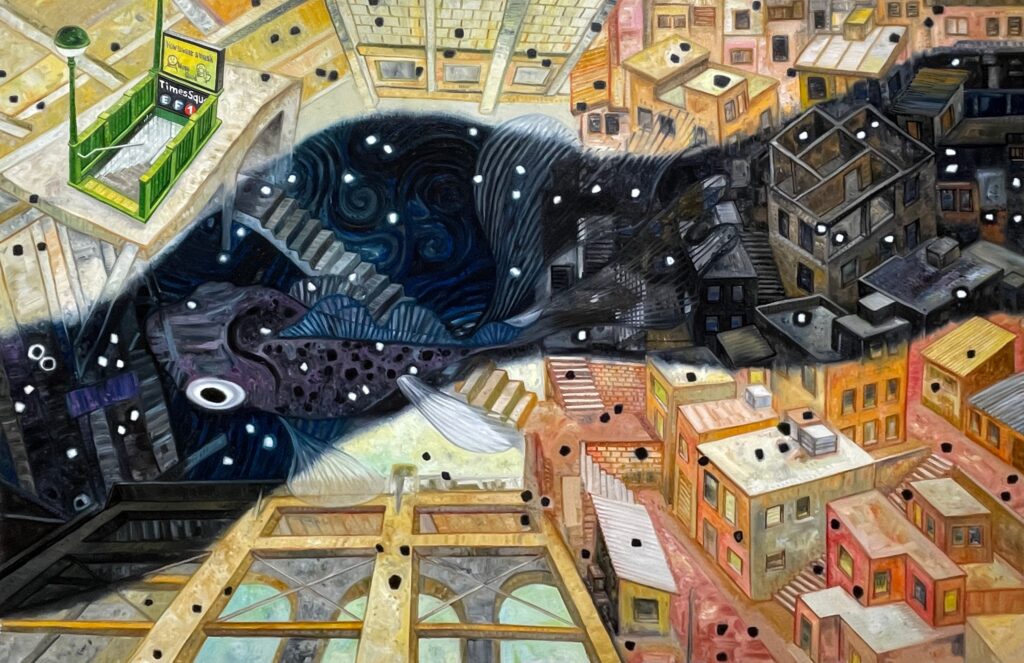
–What motifs are depicted in your works?
You were born in 1965 in Sao Paulo, Brazil, as a second-generation Brazilian of Japanese descent. After graduating from the Faculty of Architecture at the University of Sao Paulo, you came to Japan in 1991 in search of a broader field of activity. You were based in Japan for about 11 years (including a one-year stay in the UK). In 2002, you moved to New York City, where you are working since then. I have an impression that you travel freely around the world with your roots in various cultures.
Oscar Oiwa:I was raised in a Brazilian family of Japanese descent, I spent 11 years of my life in Japan from the age of 25, and now I live in New York, which is an international city, so it’s hard to say, but naturally there are influences from many different countries, which naturally and unintentionally enter my mind and become motifs. or influence not only my works but also my way of thinking.
For example, the biggest reason why I repeatedly use the ship motif in my paintings is because my father immigrated from Japan to Brazil by ship after the war in the 1950s. People hardly travel by boats nowadays and I myself don’t take boats very often except in the Seto Inland Sea for my work in the art festivals, but I always thought boats were fascinating way of transportation in the past, and that is another reason why I want to paint boats.
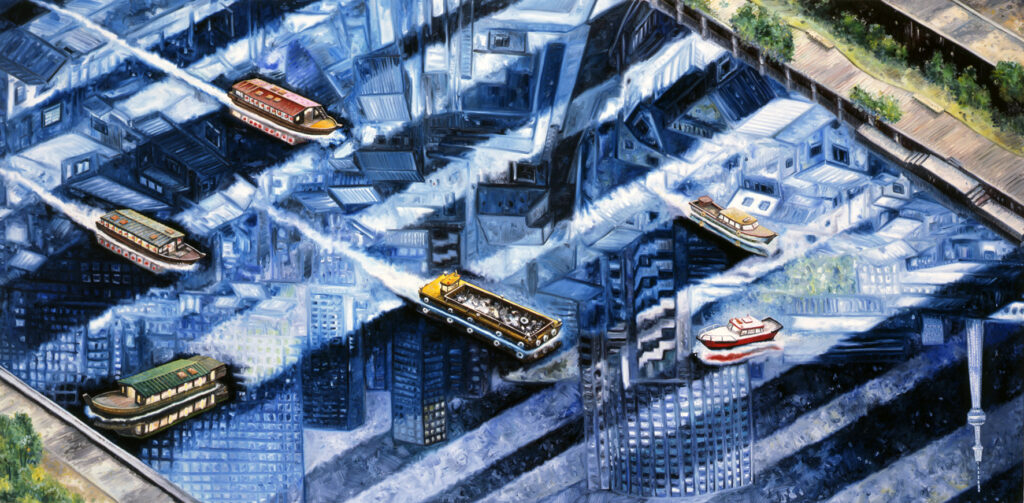
–You often paint rivers as well as boats.
Oscar Oiwa:Whether in Paris, London, Tokyo, Korea, or Shanghai, I find rivers interesting because they are connected to the birth of cities. Also, in this new work, you I painted goldfish in the river, which is a motif taken from my older work, Hotel Office Series. I often go to Japan in the summer, and there are festivals here and there, where you can find goldfish sold. That is why I draw goldfish in summer as a motif.
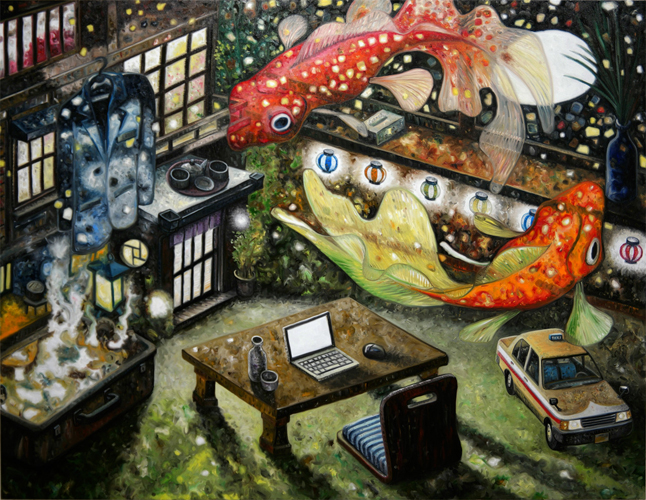
–I see many other motifs that are connected to your past works.
Oscar Oiwa:The ramen stall, which has appeared many times in my various works, is a “Showa” motif for me. The white transparent motif of flowers or clouds is one of the series of Light Flowers that I started painting when I came to the U.S. There is also a hotel series and a treehouse series, and my world is created by mixing various things together – it is like I am constructing a world using various vocabularies. When I look at my old paintings, I remember the trial and error of that time. I thought a lot and developed a lot of techniques at that time. The trajectory of these techniques is reflected in this new work.
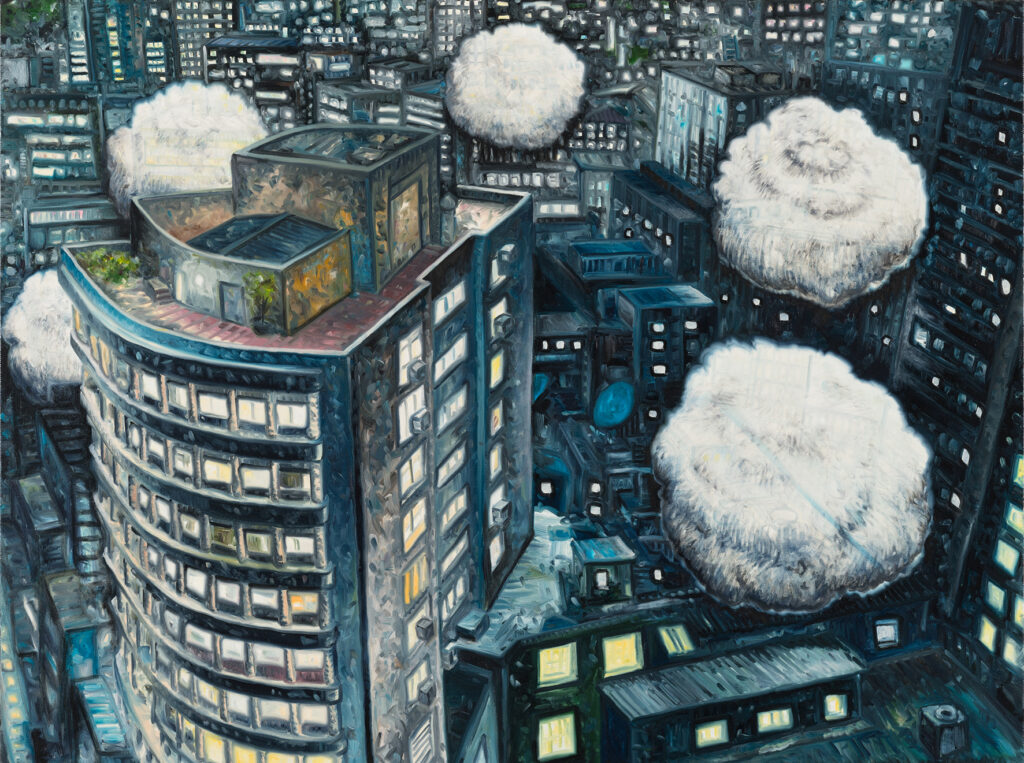
Challenging new media
–When did you first encounter oil painting?
Oscar Oiwa:When I was 30 years old, I stayed in UK for about a year. There were many museums in England, and I was able to see many exquisite 18th- and 19th-century paintings there. Also, I was able to rent a studio space separated from my house, and a young artist next door was painting in oil. A variety of influences made me challenge in oil painting.
When I create a work of art, I experiment with various methods, such as watercolor, drawing, and printmaking. What I want to do determines how I express myself in which medium. For example, “What could I do with a 3D printer?” I came up with a new idea for this latest work to answer this question. The “era” also plays a role. As I was unable to leave my house or go to my studio during the pandemic, I started making digital drawings using a large tablet.
I change my form of expression depending on what I can do at the time. If I don’t open new doors, new ideas won’t come to me. The human mind always wants to go easier way and do the same thing over and over again in order to avoid failure, but you will never discover new things by only repetition or routine.
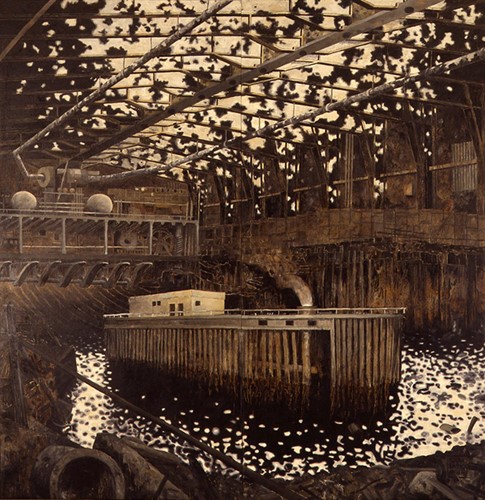
–Please tell us about your new work using a 3D printer.
Oscar Oiwa:It is an attempt to model my oil paintings using light and 3D technology. I came up with the idea of bringing these two worlds together using two very different techniques: “low-tech” painting and state-of-the-art “3D digital painting”. The work will be viewed by allowing light to penetrate the painting; the thicker 3D areas will be the dark areas of the painting, and the thinner 3D areas will be the bright areas of it as they appear to be more transparent. It is not simply a three-dimensional relie but a work in which the light and dark areas of the painting are linked to the material thickness of the 3D digital painting. At the bottom of the work, I created a small model on a palette with paints that I usually use. I imagined myself standing in the center of the palette and looking at my painting world.
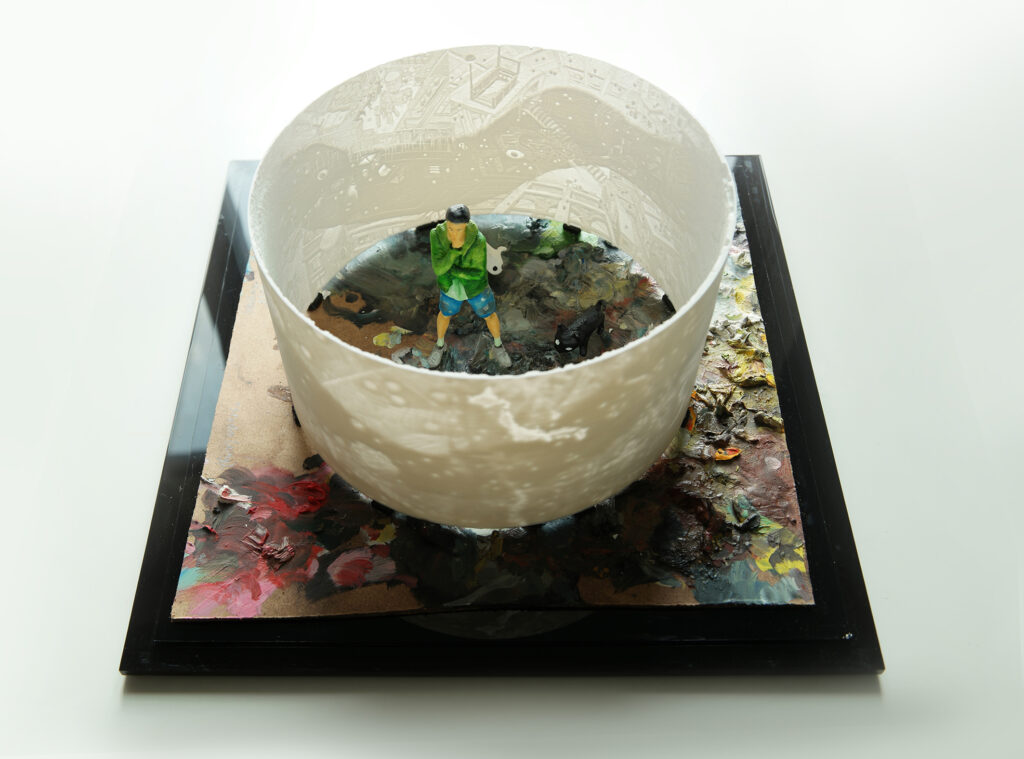
Attraction of public art
–You have been using various materials freely, haven’t you? By the way, your first collaboration with Art Front Gallery was public art at Faret Tachikawa in 1994, wasn’t it?
Oscar Oiwa:Yes, it was. That was my first public art project, so I was very happy. I was very excited when I created the artwork. I asked a cast iron factory in Kawaguchi, Saitama to do the production.
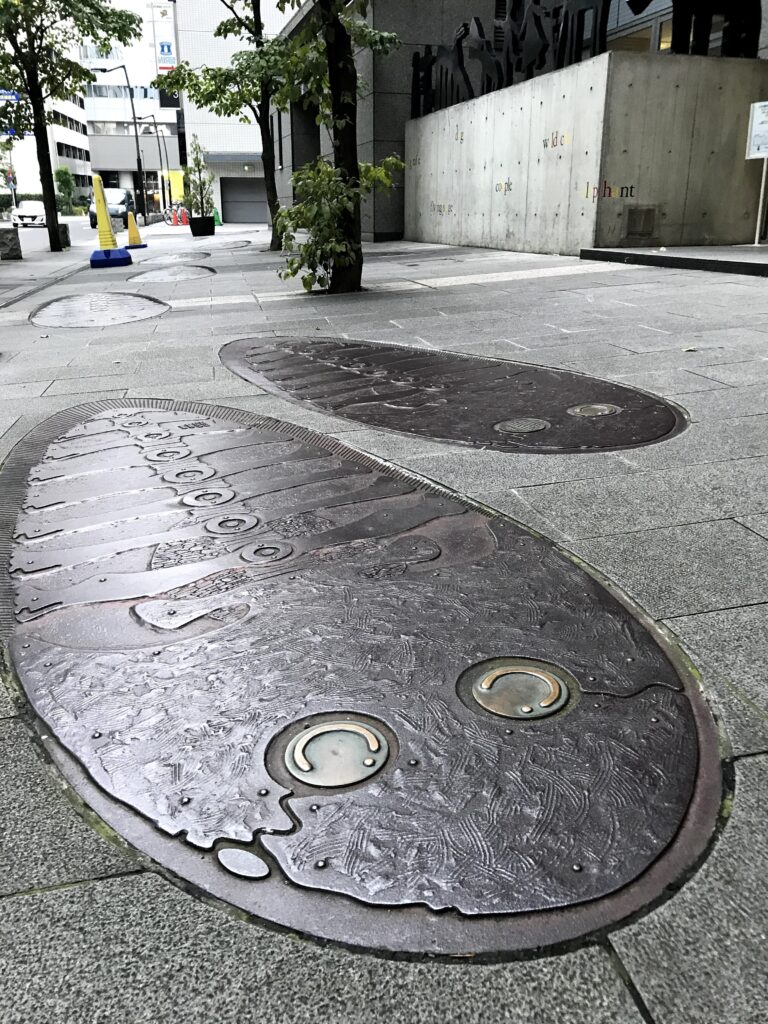
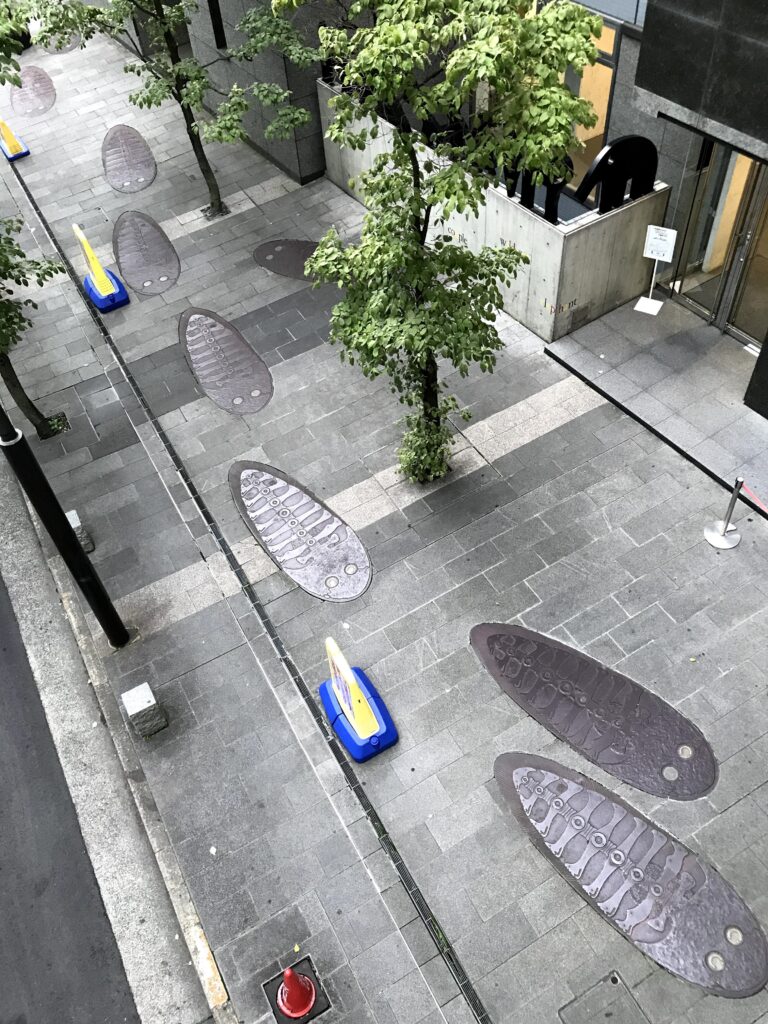
–Your most recent public art project is the 2019 Shanghai Urban Spatial Art Season (SUSAS).
Oscar Oiwa:The work in Shanghai was very interesting. There were many challenges. Before working in Shanghai, I studied the long history of China and Shanghai’s relatively new origins. Shanghai is a city with a history of only about 200 years, but it has a complicated history of American, Japanese and French influences. It was a difficult but good challenge, and I think it turned out well. I would definitely like to continue working on large scale projects like the one in Shanghai. I am attracted to large scale art, urban planning, landscape design or something that are not categorized these. I have a desire to create something on a large scale maybe because I originally studied architecture.
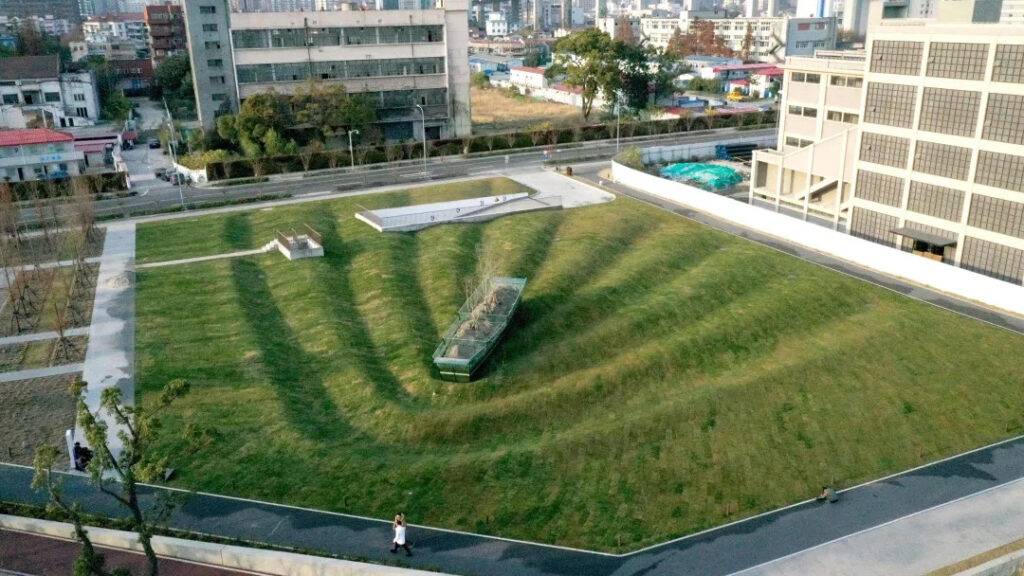
Meeting Japanese Artists at the Sao Paulo Biennial
–São Paulo, where you grew up, is also a city with a complex influx of various cultures. I heard that you assisted the Sao Paulo Biennale when you were a university student.
Oscar Oiwa:I was involved in the Sao Paulo Biennale three times. The first time I participated as an assistant at the secretariat because I spoke Japanese, and the second and third times I helped the Japan Foundation take care of the artists.
Meeting Japanese artists at that time truly became the door to my dream of becoming an artist. At that time, I helped Tadashi Kawamata with his carpentry work, got to know Katsura Funakoshi, and helped Mika Yoshizawa, Yoshishige Saito, and Tadanori Yokoo with their works. As it was a time when the Internet was not widespread, I felt as if I was meeting for the first time Japanese people of my generation, not immigrants of Japanese descent who only knew old Japan. These opportunities made me want to become an artist or to visit Japan because I was still young and full of curiosity at that time. I also learned a lot, not only from the artists from Japan, but also from a young Keith Haring and Kiefer, who was a big name even back then. That whole experience of encountering art from around the world became a major driving force for me to become an artist.
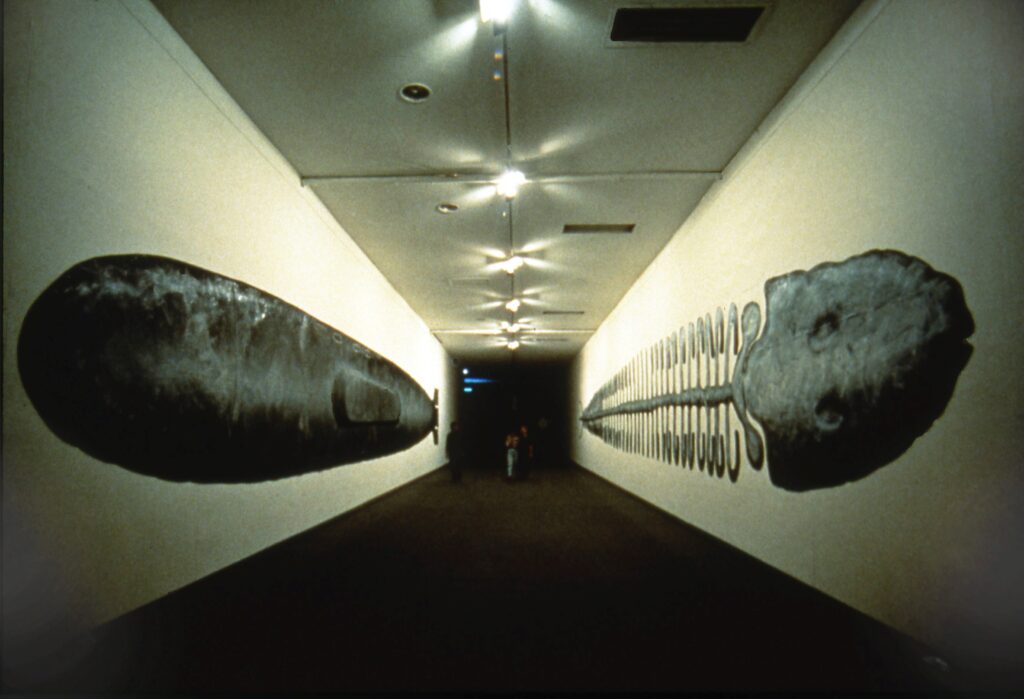
Taiwan, and in Ichihara
–Art Front Gallery will participate in the Art Fair Taipei Dangdai, which will be held from May 12 this year. What kind of works will you exhibit?
Oscar Oiwa:I will be bringing eight oil tableaux, four prints from the Quarantine Drawing Series, and four new drawings, Shadow Cat and Light Rabbit. In the new drawings, the cat represents shadow and the rabbit represents light, which are a motives I always draw as a symbol of light and darkness.
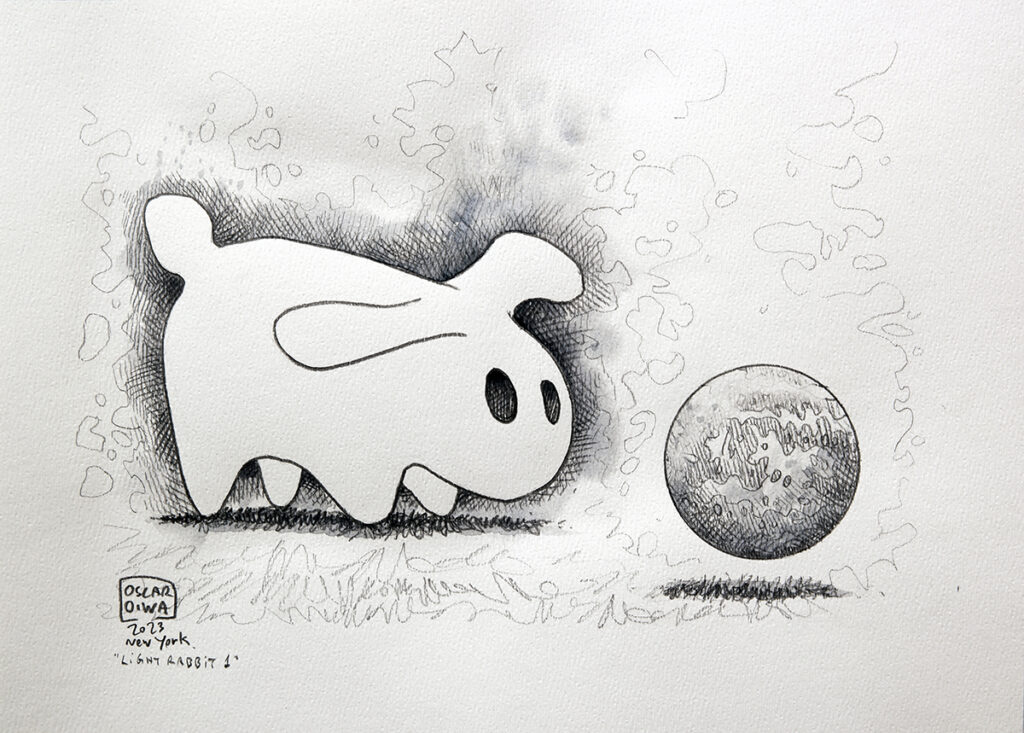
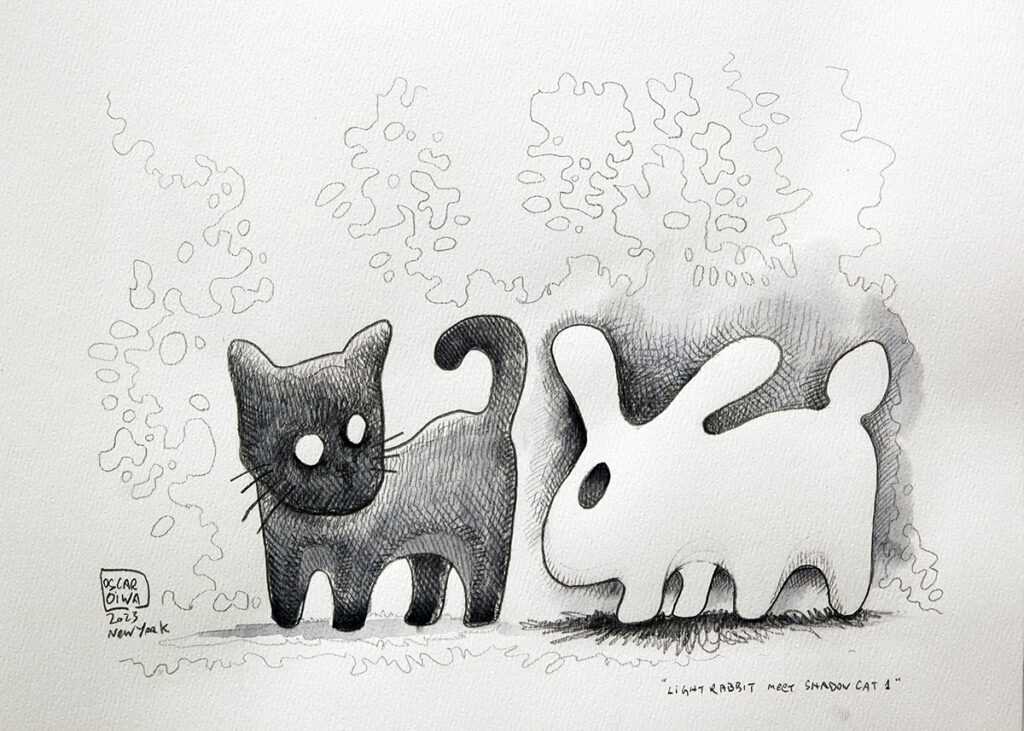
In Taiwan, I also participated in the Taiwan Lantern Festival (Taipei) held in February this year. Since the Chinese zodiac sign this year is the rabbit as well, I thought a light rabbit would be a perfect motif. I created a large rabbit balloon-like work and installed it at a subway station on the main street. An abstract sphere, which was neither the moon nor the earth, was also displayed as if it were floating together, and was covered by the media.
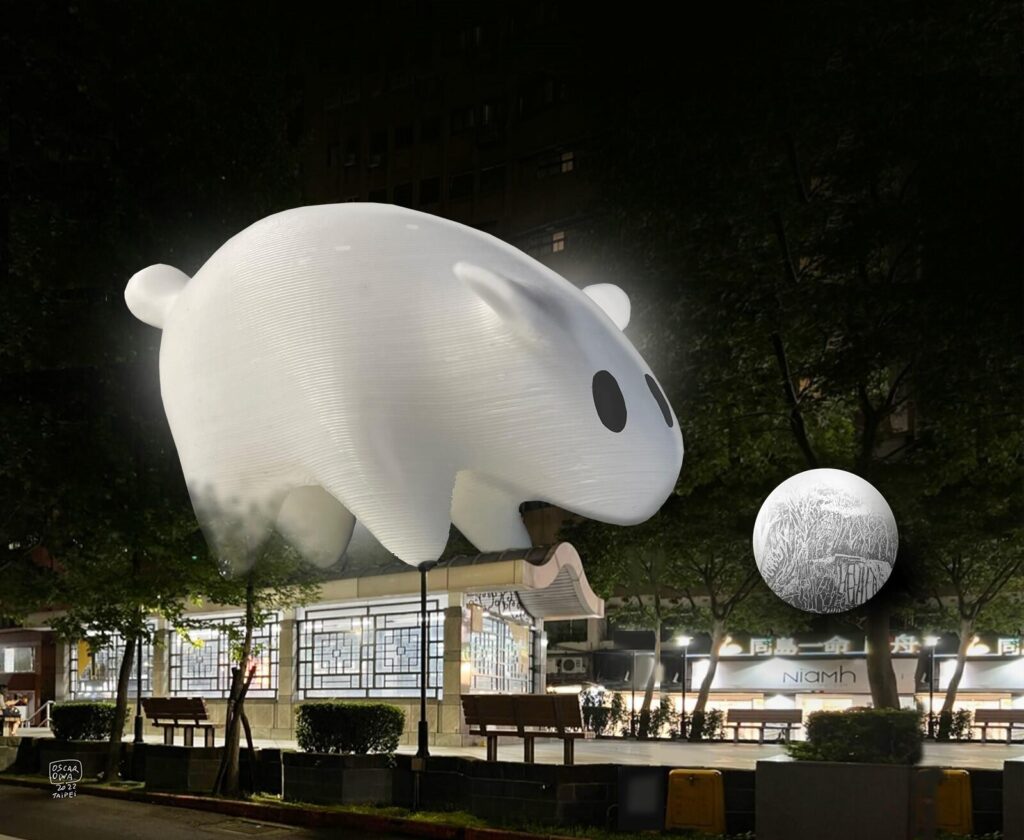
–Please tell us about your other future activities. You will participate in a group exhibition at the Ichihara Lakeside Art Museum in Chiba Prefecture this summer. We have heard that the museum had a strong desire to display your works in the long corridor-like space of the Ichihara Lakeside Art Museum. What kind of works will be on display?
Oscar Oiwa:The motif of the Ichihara is also a river. The museum’s 10th anniversary exhibition will be about the region, and the theme will be “The Secret of the Lake,” which is about a river that became a lake due to the construction of a dam. I recently visited the Yoro River that runs through Ichihara City, from the river’s upper reaches, its origin, to the industrial area where it empties into the sea. The inspiration I got from there will be turned into a large mural-like work; the drawing will be on two large pieces of paper about 6 meters long each, so it will be a very powerful work of art.
This year, Oscar Oiwa and Art Front Gallery will be collaborating at various locations throughout the year. Why not take a trip and visit them?
Solo Exhibition Oscar Oiwa: My Ring April 21 (Fri) – May 28 (Sun), 2023
https://www.artfrontgallery.com/en/exhibition/archive/2023_03/4796.html
UPCOMING

TOPIC
4/23(火) 北川フラム塾 第30回 地方芸術祭と震災-奥能登を中心に(ゲスト:暮沢剛巳)
Exhibition
Oscar Oiwa solo exhibition:Oil Octopus in the era of turbulent at Shibuya Hikarie 8/,Apr.27-May.12
TOPIC
Uchiboso Art Festival will be held from March 23rd.
TOPIC
The Oku-Noto-Suzu Yassar Project has been launched.
TOPIC
Art Festivals and Exhibitions 2024